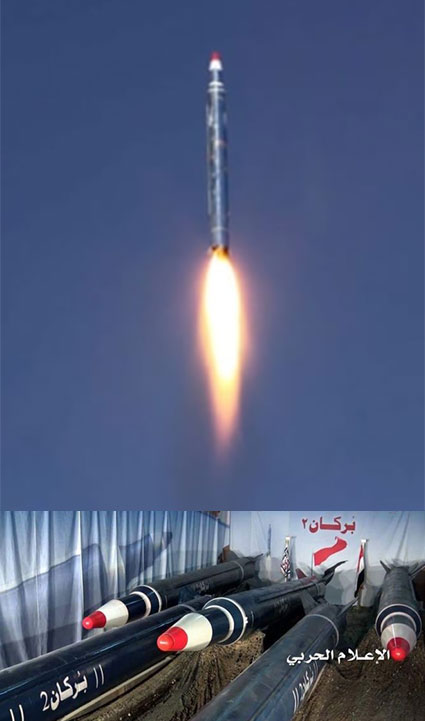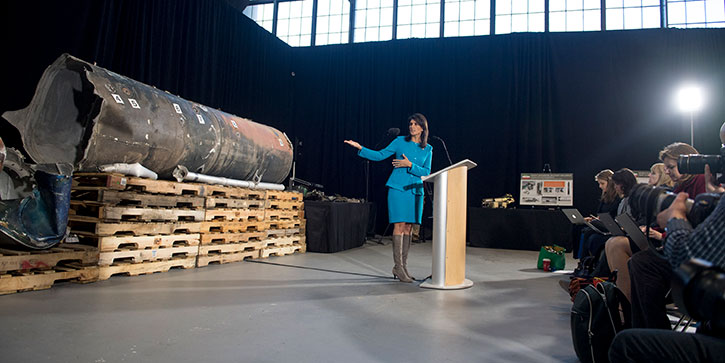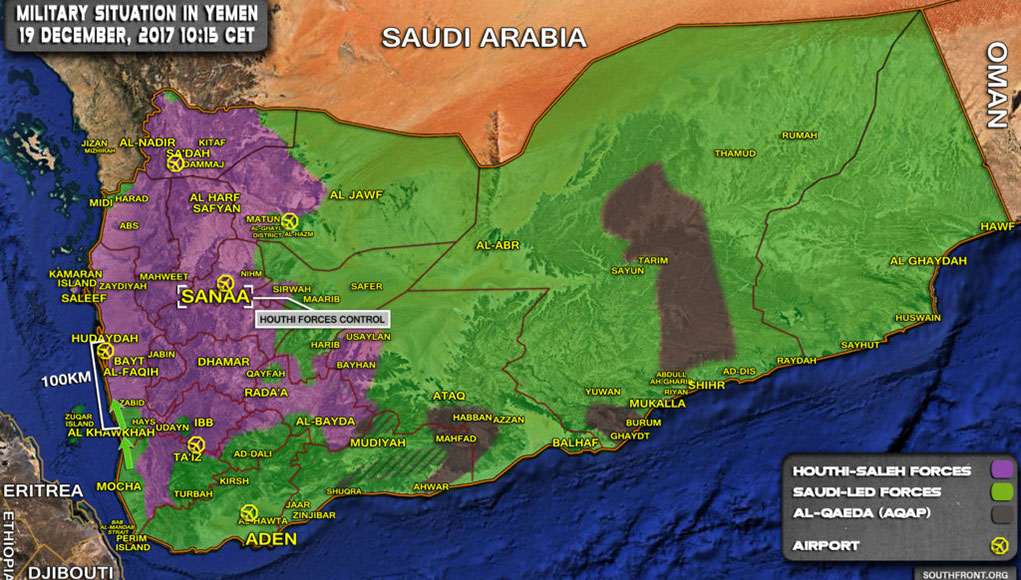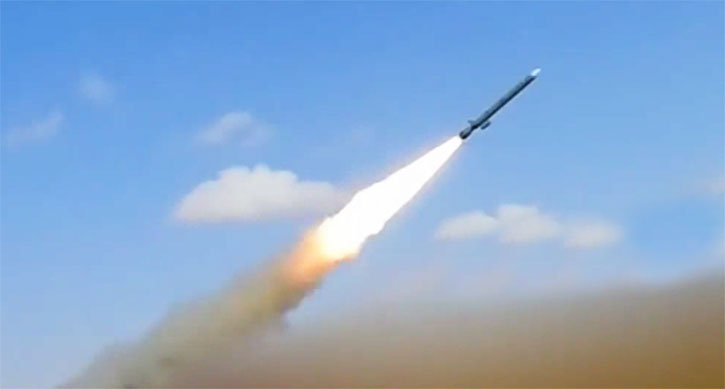
Iranian backed Houthis in Yemen targeted the Saudi capital Riyadh today, launching a Burkan 2 ballistic missile. This was the second failed attempt by the Houthis to hit the capital of Saudi Arabia. The first targeted the city’s international airport. Today’s attack was directed at the Royal Court at al-Yamama palace, where a meeting of Saudi leaders was underway. The Saudi air defense intercepted and destroyed the missile at a relatively close range above the city.
Houthi spokesman Mohammed Abdussalam said that the Houthis fired a Burkan-2 ballistic missile at the Al-Yamama Palace in Riyadh. “The Saudis started the war. Our response will continue and increase, whether it’s targeting deep inside Saudi Arabia, targeting military positions where Saudi jets fly from, or military bases inside Yemeni territory,” Abdul Salam said.
Houthis claimed they have launched the first Burkan-2 at Riyadh on March 19, but provided no evidence of such attack. Burkan-2 is thought to be the Iranian Qiam-1 missile, a derivative of the Russian Scud-C, a ballistic missile with a range of 850 km. In its first launch at the Saudi port city of Yanboh on July 22, 2017, Burkan-2 achieved a longer distance than the range specified by the design – hitting a target at a distance of at least 920 km from the Saudi-Yemeni border.
In recent weeks several Houthi missiles were intercepted over Saudi Arabia, likely by Patriot air defense systems. On November 4 a Burkan-2 missile was intercepted not far from the Riyadh international airport, and on November 20 the military airbase at Khamis Mushayet was targeted by an unidentified missile that was also claimed to have been intercepted by the Saudi air defenses. In the past Houthis used SS-21 Tochka tactical short-range missiles, captured from the government forces. The Burkan-2 and Soumar were likely supplied by sea from Iran.

The Houthis also launched a single Sumar cruise missiles on December 3. The target claimed by the Houthis was a nuclear plant being constructed in Abu Dhabi. This was the first time the Houthis used such a weapon, likely to have been supplied by Iran. Considered a derivative of the Russian KH-55 cruise missile, Soumar has a theoretical range of 2,500 km, enabling it to reach the UAE from a launch site in Yemen. However, the missile developed a malfunction while in flight it crashed after flying about 140 km.

Using the conflicts in Syria and Yemen to demonstrate the capabilities of their weapons, particularly missiles and long-range weapons, Iran is projecting power and influence throughout and beyond the region.
Unlike the Syrian regime Iran is assisting in Syria, the Iranian backed Houthis in Yemen are under pressure, as Saudi-led coalition backing local forces are now closing on the city of Hudaydah, a strategic seaport on the Red Sea providing the Iranians a logistical link to support the Houthis in Yemen. The Houthis control the mountainous heartland of Yemen, including the capital city Sana’a. The areas bordering Saudi Arabia also provide favorable locations for missile launches at coalition partners they are fighting in Yemen.




















